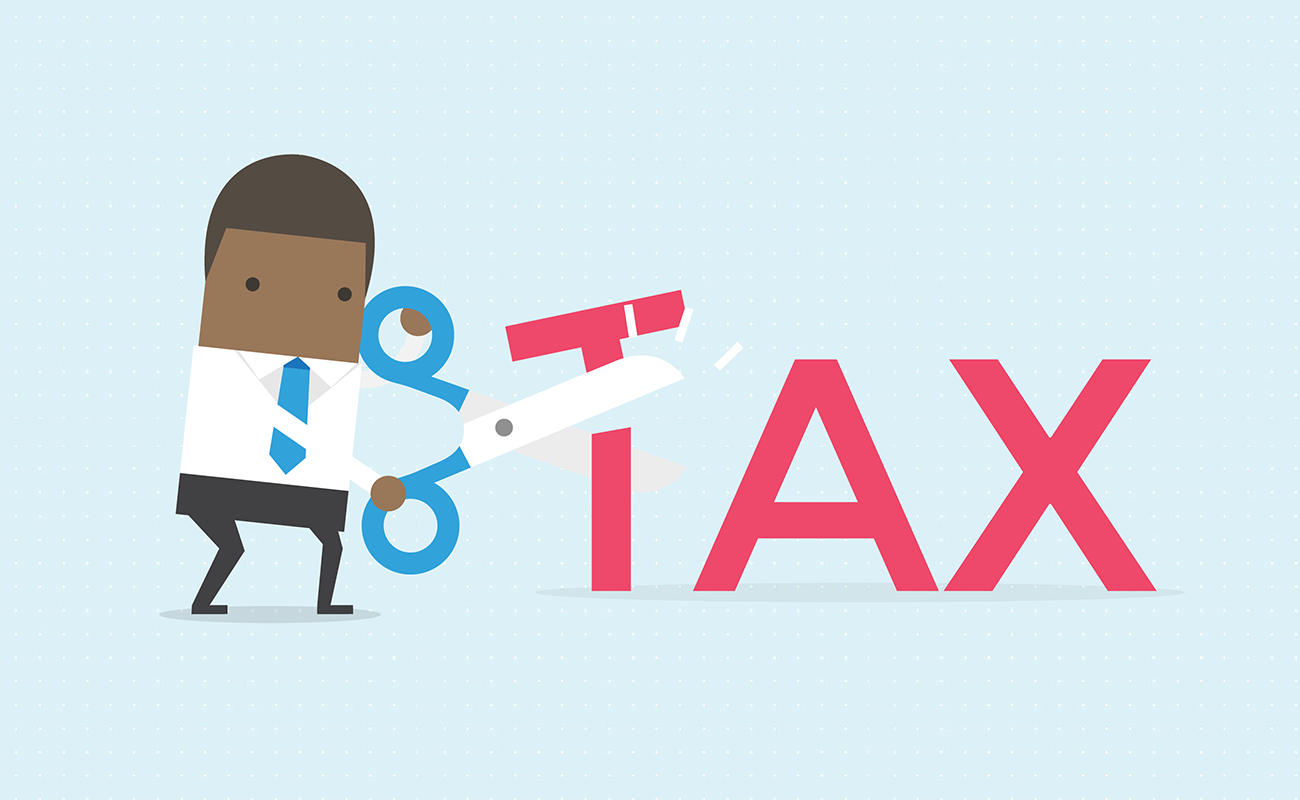 401(k) IRA Rollover Calculator
401(k) IRA Rollover CalculatorHave you recently changed jobs & are considering what to do with your 401(k) plan? This calculator enables you to see the economic implications of rolling over your plan into a tax-deferred IRA or taking a lump sum distribution. This calculator presumes contributions are made before texes & that state & federal income tax rates will be roughly the same around retirement age. It also presumes withdrawals are qualified under IRS rules.
Authored by Jose Abuyuan on December 1, 2019

Kiplinger contributor Jerry Golden describes deferred taxes on retirement accounts as a “tax bomb.” This can be especially alarming in a situation where you stand to lose a sizable part of your gains to the IRS. This threat to your nest egg becomes clearer as you near retirement. Heavy burdens may undercut your ability to respond to medical emergencies or other unforeseen events.
Like it or not, deferrals serve only to delay the first of life's two certainties. The choices you make in managing these burdens can determine the fate of your finances.
Tax-deferred assets risk getting double-taxed, especially when receiving social security payments. Outside Roth IRAs, any retirement income from a 401(k) plans can cause a tax hit on your social security payments. Required minimum distributions are enforced the following first of April after you turn 70 and a half. You will need to withdraw your RMD or risk a 50% hit.
The following table shows the hypothetical RMD for a retirement account with $1,000,000 in savings in it.
Age |
Distribution Period |
Required Distribution |
|---|---|---|
| 70 | 27.4 years | $36,496.35 |
| 71 | 26.5 years | $37,735.85 |
| 72 | 25.6 years | $39,062.50 |
| 73 | 24.7 years | $40,485.83 |
| 74 | 23.8 years | $42,016.81 |
| 75 | 22.9 years | $43,668.12 |
| 76 | 22 years | $45,454.55 |
| 77 | 21.2 years | $47,169.81 |
| 78 | 20.3 years | $49,261.08 |
| 79 | 19.5 years | $51,282.05 |
| 80 | 18.7 years | $53,475.94 |
| 81 | 17.9 years | $55,865.92 |
| 82 | 17.1 years | $58,479.53 |
| 83 | 16.3 years | $61,349.69 |
| 84 | 15.5 years | $64,516.13 |
| 85 | 14.8 years | $67,567.57 |
| 86 | 14.1 years | $70,921.99 |
| 87 | 13.4 years | $74,626.87 |
| 88 | 12.7 years | $78,740.16 |
| 89 | 12 years | $83,333.33 |
| 90 | 11.4 years | $87,719.30 |
| 91 | 10.8 years | $92,592.59 |
| 92 | 10.2 years | $98,039.22 |
| 93 | 9.6 years | $104,166.67 |
| 94 | 9.1 years | $109,890.11 |
| 95 | 8.6 years | $116,279.07 |
| 96 | 8.1 years | $123,456.79 |
| 97 | 7.6 years | $131,578.95 |
| 98 | 7.1 years | $140,845.07 |
| 99 | 6.7 years | $149,253.73 |
| 100 | 6.3 years | $158,730.16 |
| 101 | 5.9 years | $169,491.53 |
| 102 | 5.5 years | $181,818.18 |
| 103 | 5.2 years | $192,307.69 |
| 104 | 4.9 years | $204,081.63 |
| 105 | 4.5 years | $222,222.22 |
| 106 | 4.2 years | $238,095.24 |
| 107 | 3.9 years | $256,410.26 |
| 108 | 3.7 years | $270,270.27 |
| 109 | 3.4 years | $294,117.65 |
| 110 | 3.1 years | $322,580.65 |
| 111 | 2.9 years | $344,827.59 |
| 112 | 2.6 years | $384,615.38 |
| 113 | 2.4 years | $416,666.67 |
| 114 | 2.1 years | $476,190.48 |
| 115 or older | 1.9 years | $526,315.79 |
During retirement you may be in a higher income bracket than you were in your youth. With the kids out of the house and mortgage debt paid, you will lose many previous deductions. If you keep the lifestyle and income you've kept before, you're likely pay a higher marginal rate.
You might leave your spouse in a precarious situation when you die. Leaving a 401(k) to your spouse may leave them a fully taxable account. Their status goes from married filing jointly to single, which may increase their tax rates.
Taxes owed to deferred investments need to be paid. You are charged the prevailing rates for the gains you have made. Deferring taxes has can earn you more than if you paid them immediately since the non-taxed capital can compound for many years.

Time is the biggest ally of any investor. You're probably familiar with how long time horizons help you take advantage of compound interest. It can also work toward your favor when you deal with taxes. By deferring tax burdens until retirement, the portion which would have been taxed is compounded many times.
Following this system nets you a higher return than if you used post-tax income. The higher principal equates to a significantly larger return even after the taxes have been paid.
Investing with post-tax dollars mean that you've consequently paid more in taxes than if you've had invested it in a deferred account. Doing so means paying higher taxes today for fewer future tax liabilities.
The following table shows the cumulative savings on a $10,000 investment which earned 10% annually before income taxes. The left side shows how an investment would perform if gains were taxed annually, whereas the right 3 columns show how deferring taxes impacts total returns before & after paying income taxes on the investment.
For the sake of simplicity all tax rates used in this example are 35%, though some investments may be taxed at different rates based on circumstances including length of time the investment was held, the type of instrument being invested in, type of account the investment was held in & where the taxpayer lives.
Account Taxed Annually |
Taxed-deferred Results |
|||||
|---|---|---|---|---|---|---|
| Year | Annual Tax | Total Tax | End Savings | Pre-tax | Deferred Taxes | After-tax Savings |
| 1 | $350.00 | $350.00 | $10,650.00 | $11,000.00 | $350.00 | $10,650.00 |
| 2 | $372.75 | $722.75 | $11,342.25 | $12,100.00 | $735.00 | $11,365.00 |
| 3 | $396.98 | $1,119.73 | $12,079.50 | $13,310.00 | $1,158.50 | $12,151.50 |
| 4 | $422.78 | $1,542.51 | $12,864.66 | $14,641.00 | $1,624.35 | $13,016.65 |
| 5 | $450.26 | $1,992.77 | $13,700.87 | $16,105.10 | $2,136.79 | $13,968.32 |
| 6 | $479.53 | $2,472.30 | $14,591.42 | $17,715.61 | $2,700.46 | $15,015.15 |
| 7 | $510.70 | $2,983.00 | $15,539.87 | $19,487.17 | $3,320.51 | $16,166.66 |
| 8 | $543.90 | $3,526.90 | $16,549.96 | $21,435.89 | $4,002.56 | $17,433.33 |
| 9 | $579.25 | $4,106.15 | $17,625.70 | $23,579.48 | $4,752.82 | $18,826.66 |
| 10 | $616.90 | $4,723.05 | $18,771.37 | $25,937.42 | $5,578.10 | $20,359.33 |
| 11 | $657.00 | $5,380.05 | $19,991.51 | $28,531.17 | $6,485.91 | $22,045.26 |
| 12 | $699.70 | $6,079.75 | $21,290.96 | $31,384.28 | $7,484.50 | $23,899.78 |
| 13 | $745.18 | $6,824.93 | $22,674.87 | $34,522.71 | $8,582.95 | $25,939.76 |
| 14 | $793.62 | $7,618.55 | $24,148.74 | $37,974.98 | $9,791.24 | $28,183.74 |
| 15 | $845.21 | $8,463.76 | $25,718.41 | $41,772.48 | $11,120.37 | $30,652.11 |
| 16 | $900.14 | $9,363.90 | $27,390.11 | $45,949.73 | $12,582.41 | $33,367.32 |
| 17 | $958.65 | $10,322.56 | $29,170.46 | $50,544.70 | $14,190.65 | $36,354.06 |
| 18 | $1,020.97 | $11,343.52 | $31,066.54 | $55,599.17 | $15,959.71 | $39,639.46 |
| 19 | $1,087.33 | $12,430.85 | $33,085.87 | $61,159.09 | $17,905.68 | $43,253.41 |
| 20 | $1,158.01 | $13,588.86 | $35,236.45 | $67,275.00 | $20,046.25 | $47,228.75 |
| 21 | $1,233.28 | $14,822.13 | $37,526.82 | $74,002.50 | $22,400.87 | $51,601.62 |
| 22 | $1,313.44 | $16,135.57 | $39,966.06 | $81,402.75 | $24,990.96 | $56,411.79 |
| 23 | $1,398.81 | $17,534.38 | $42,563.86 | $89,543.02 | $27,840.06 | $61,702.97 |
| 24 | $1,489.74 | $19,024.12 | $45,330.51 | $98,497.33 | $30,974.06 | $67,523.26 |
| 25 | $1,586.57 | $20,610.69 | $48,276.99 | $108,347.06 | $34,421.47 | $73,925.59 |
| 26 | $1,689.69 | $22,300.38 | $51,415.00 | $119,181.77 | $38,213.62 | $80,968.15 |
| 27 | $1,799.52 | $24,099.91 | $54,756.97 | $131,099.94 | $42,384.98 | $88,714.96 |
| 28 | $1,916.49 | $26,016.40 | $58,316.17 | $144,209.94 | $46,973.48 | $97,236.46 |
| 29 | $2,041.07 | $28,057.47 | $62,106.72 | $158,630.93 | $52,020.83 | $106,610.10 |
| 30 | $2,173.74 | $30,231.20 | $66,143.66 | $174,494.02 | $57,572.91 | $116,921.11 |
| 31 | $2,315.03 | $32,546.23 | $70,443.00 | $191,943.42 | $63,680.20 | $128,263.23 |
| 32 | $2,465.50 | $35,011.74 | $75,021.79 | $211,137.77 | $70,398.22 | $140,739.55 |
| 33 | $2,625.76 | $37,637.50 | $79,898.21 | $232,251.54 | $77,788.04 | $154,463.50 |
| 34 | $2,796.44 | $40,433.94 | $85,091.59 | $255,476.70 | $85,916.84 | $169,559.85 |
| 35 | $2,978.21 | $43,412.14 | $90,622.55 | $281,024.37 | $94,858.53 | $186,165.84 |
| 36 | $3,171.79 | $46,583.93 | $96,513.01 | $309,126.81 | $104,694.38 | $204,432.42 |
| 37 | $3,377.96 | $49,961.89 | $102,786.36 | $340,039.49 | $115,513.82 | $224,525.67 |
| 38 | $3,597.52 | $53,559.41 | $109,467.47 | $374,043.43 | $127,415.20 | $246,628.23 |
| 39 | $3,831.36 | $57,390.77 | $116,582.86 | $411,447.78 | $140,506.72 | $270,941.06 |
| 40 | $4,080.40 | $61,471.17 | $124,160.75 | $452,592.56 | $154,907.39 | $297,685.16 |
| 41 | $4,345.63 | $65,816.80 | $132,231.19 | $497,851.81 | $170,748.13 | $327,103.68 |
| 42 | $4,628.09 | $70,444.89 | $140,826.22 | $547,636.99 | $188,172.95 | $359,464.05 |
| 43 | $4,928.92 | $75,373.81 | $149,979.93 | $602,400.69 | $207,340.24 | $395,060.45 |
| 44 | $5,249.30 | $80,623.10 | $159,728.62 | $662,640.76 | $228,424.27 | $434,216.49 |
| 45 | $5,590.50 | $86,213.61 | $170,110.98 | $728,904.84 | $251,616.69 | $477,288.14 |
| 46 | $5,953.88 | $92,167.49 | $181,168.20 | $801,795.32 | $277,128.36 | $524,666.96 |
| 47 | $6,340.89 | $98,508.38 | $192,944.13 | $881,974.85 | $305,191.20 | $576,783.65 |
| 48 | $6,753.04 | $105,261.42 | $205,485.50 | $970,172.34 | $336,060.32 | $634,112.02 |
| 49 | $7,191.99 | $112,453.41 | $218,842.05 | $1,067,189.57 | $370,016.35 | $697,173.22 |
| 50 | $7,659.47 | $120,112.89 | $233,066.79 | $1,173,908.53 | $407,367.99 | $766,540.54 |
One of the benefits of using post-tax income when investing is that it hedges against immediate tax hikes. In volatile financial climates with high income inequality & political polarization tax rates may spike. Most Americans tend to pay low tax rates in retirement due to far lower incomes, though you might find the new rates punitive; 401(k)s in particular tend to be exposed to the full force of tax hikes. To avoid future higher taxes, you have the option of rolling your savings into a tax-advantaged Roth IRA or Roth 401(k) account. This way you pay the current rate. This option makes good sense if you are close to retirement age and waiting out a rate hike is not feasible.
Hikes are less of an issue if you are young. Tax laws are unpredictable and can be weathered. Today's tax hikes, while frightening, may lead to next year's cuts.
Talk to a trustworthy financial planner to find out which of these options is right for you.
People who retire or change employers may withdraw their 401(k) account in a lump sum to redeem or transfer the funds.
Assuming your investments compounded for an extended period, you would have accrued a lot more money before being taxed. If you're faced with a big hike next year, it can make sense to take the tax hit today. Withdraw your money and reinvest the post-tax dollars in a Roth IRA, Roth 401(k), or a tax-advantaged annuity.
The amount received may be significantly smaller than what you could've expected when selling the investments at market value due to taxes. If the market is in a swoon that can compound the losses.
To be useful, the 401(k) from your previous employer must be reinvested. This can be a challenge for many individuals. If you've roll over the sum to another 401(k) or an IRA earnings grow in a tax-advantaged retirement account without incurring tax penalties. Choosing the right rollover option is critical; a plan with better rates or smaller fees can significantly increase your savings.
Alternatively, you could leave your current plan with your previous employer, especially if their plan has low costs & the company is stable. A robust investment program can produce a steady source of gains even after you have stopped contributing.

Taxation is a complicated affair, and not everyone is exposed to the same risks. If your retirement is still far off, time is still your ally. There are many ways you make your portfolio more tax efficient as your approach retirement.
Rather than focus on post-tax investments, you can take advantage of a broad array of options to reduce your tax burdens. Ask your accountant for insights on which strategies can work to your advantage.
Where you live in retirement impacts state-based taxation of your retirement funds. Your total tax burden is higher in states with high income taxes like New York and California.
If you're an aspiring snowbird, you're in luck. Many warm-weather states that are attractive places to retire are also the ones with the most tax advantages for retirees. Hawaii and Florida, for instance, do not tax social security benefits and pensions. Florida is also one of the states that do not charge taxes on 401(k)s and IRAs, and have no state income tax.
Moving to a tax-advantaged state might provide you with advantages in managing your retirement tax burdens. This is only one of several factors to consider when deciding to move.
Be sure you've considered everything before committing to this decision.

Reducing any tax penalties associated with withdrawing your funds increases your after-tax savings. You can avoid double taxation by making required minimum distributions in a timely manner and making one distribution per year.

Philanthropic endeavors can be a gift that keeps on giving. Qualified charitable distributions from your IRA are non-taxable & count toward your RMD. They can also reduce the value your taxable estate.
Some states have income tax rate above 40% after they are added to the federal tax rate. Short-term capital gains are typically treated like ordinary income. Long-term capital gains are charged much less punitively by the IRS.
Choosing these investments can allow you to keep about 75 percent of your gains.
Diversifying your portfolio can help you hedge against many things including taxation. One way of doing this is to keep part of your tax-preferred investments outside your retirement funds. Whereas retirement funds withdrawals count as income, many tax-preferred investments are treated as capital gains. You can control your taxable returns by letting them grow tax deferred within a retirement plan. Splitting the difference give you the best of both worlds.
Older adults are often discouraged from investing in volatile growth stocks due to their risk profiles. When you are old you may not be able to afford a major drawdown & might be inclined to cash out near the bottom of the market. When you are young you can afford many major drawdowns as they give you a larger ownership share on future automated investments when the stock market is cheaper.
While stocks are volatile in the short run, they often outperform every other source of income over a longer time horizon. Their gains are also taxable as capital gains, which makes incorporating them into your retirement strategy worthwhile.
Capital gains taxes apply to the sale of assets based upon their appreciation. If you paid $60,000 for a stock now worth $100,000 only $40,000 would be taxable. Under current laws, you may not need to pay any tax if you hold the assets until your death.
| Long-term capital gains tax rate | Single | Married Filing Jointly |
|---|---|---|
| 0% | $0 to $39,375 | $0 to $78,750 |
| 15% | $39,376 to $434,550 | $78,751 to $488,850 |
| 20% | $434,551 or more | $488,851 or more |
There is also a net investment income tax of 3.8% due on some investment income. Long-term gains on "collectible assets" are taxed at 28%.
Quality stocks purchased for a fair price and held for a long duration can generate value without incurring taxes. Qualified dividends are taxed at a lower rate than ordinary income & capital appreciation is not taxed until the position has been liquidated. Stocks also hedge against inflation, helping you keep the value of your savings. By playing the long game, you also cut back on the short-term volatility associated with stocks.

Some 401(k)s have the option to incorporate stock in the company itself. The amount of growth your company made since you bought the stock is considered net unrealized appreciation, which have special tax privileges. Having these assets taxed at capital gains rates can save you thousands annually.
In general it is typically best to invest your retirement funds into a broad basket rather than doubling down on your employer. If you work for an Enron or Tyco the last thing you would want was to find out your retirement is a zero at the same time you lost your job as the company imploded due to an accounting scandal.
Jose Abuyuan is a web content writer, fictionist, and digital artist hailing from Las Piñas City. He is a graduate of Communication and Media Studies at San Beda College Alabang, who took his internship in the weekly news magazine the Philippines Graphic. He has authored works professionally for over a decade.